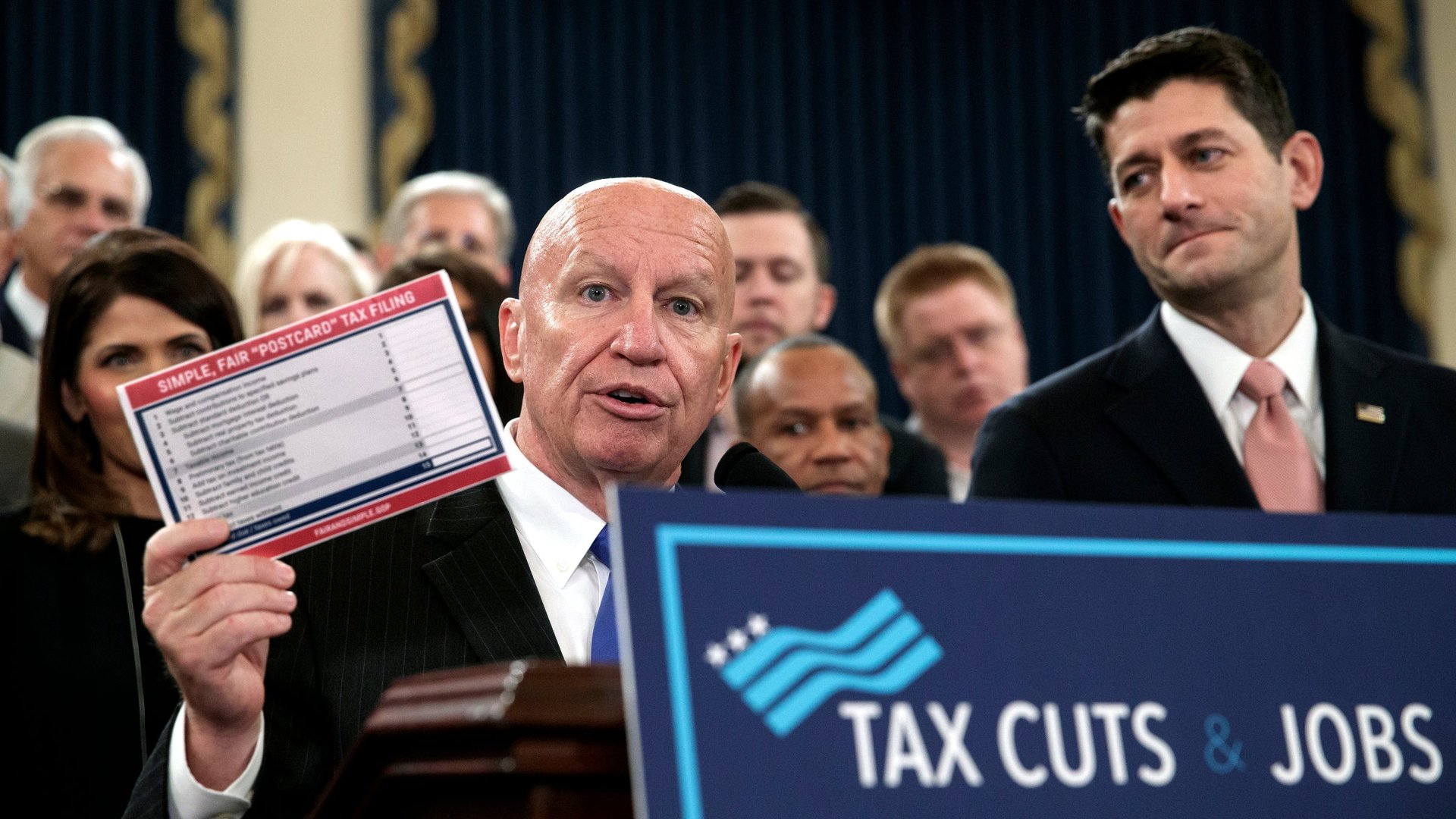US Republicans finally unveiled their tax bill. What’s in it?
Republican leaders unveiled their tax cut proposal today with a simple message: We are focused squarely on middle Americans living paycheck to paycheck. They emphasized their forecast of a nearly $1,200 reduction in taxes for middle class earners and a far simpler tax return.


Republican leaders unveiled their tax cut proposal today with a simple message: We are focused squarely on middle Americans living paycheck to paycheck. They emphasized their forecast of a nearly $1,200 reduction in taxes for middle class earners and a far simpler tax return.
They did not mention that high-earning Americans will see many times larger gains from the bill, with the richest reducing their tax bill by hundreds of thousands of dollars. Nor did they discuss how these tax cuts will be wedged into the budget with deep cuts in federal spending and billions of dollars in new debt.
Republicans were unable to generate political support for a dramatic overhaul of the American tax system, along the lines of their more ambitious earlier plans. Instead, they are selling a disjointed collection of cuts and pay-fors as a jobs program for economically-stretched Americans. But the connection between tax cuts and jobs is difficult to establish, for corporations or individuals.
Independent analysts are still assessing the plan, which doesn’t appear to deviate far from the Republican framework outlined earlier. Attempts to score that framework found it was far more costly than promised, and that some low-income Americans would eventually experience tax increases.
The lengthy plan is summarized here (pdf). It contains ideas that conservative policymakers have long pushed for, including a dramatic reduction on income taxes paid by corporations, fewer income tax brackets, and the eventual repeal of taxes paid on inheritances of $5.5 million or more.
Here are some key features:
- The plan reduces the number of individual income tax brackets from seven to just four, keeping the top income rate of 39.6% but applying it at a higher level. The brackets will be determined by a slower-growing measure of inflation, which means they will grow more slowly, exempting more income.
- The standard deduction—the amount of personal income that is “tax-free”—is effectively doubled, reaching $24,000 for joint-filing households.
- The exemption from inheritance taxes is increased to $11.2 million, before being eliminated in 2024.
- The plan increases the child tax credit. Yet a key part of that benefit—an additional $300 tax credit for everyone in a household—will expire after five years in order to limit the cost of the plan.
- The statutory corporate tax rate is cut from 35% to 20%. Foreign profits are exempted, except for a 10% tax on foreign subsidiaries. The plan limits businesses’ ability to deduct interest expenses. The plan also allows companies to deduct their capital expenses, but only for five years.
To pay for all of this, the plan also goes after some wasteful tax breaks, including those on the cost of moving, business entertainment expenses, and sports stadiums. The National Federation of Independent Businesses has already said it opposes the bill because it doesn’t help small business enough. The bill also limits tax benefits for those with high medical expenses, students borrowing to finance their education, and people purchasing homes, which is sure to attract critics. It does not touch retirement benefits, a controversial idea floated in recent weeks.
One pay-for in particular is expected to cause heartburn among Republican representatives from states with high local taxes: The plan eliminates the deduction of state and local sales and income taxes, and caps the deduction on property taxes at $10,000. This would mean up-front increase in taxes for many people living in high-tax states like California, New York and Texas, before the other elements of the plan are figured in.
The thin margin Republican leaders have to enact this plan is suggested by the vote on the budget resolution that undergirds it: It passed the House by just four votes. They have just 10 working days left before the Thanksgiving deadline they have set to pass the tax bill. Then, they want to reconcile it with the senate’s version and send it for Trump’s signature before the end of the year.
This approach—unveiling a bill written behind closed doors by a few Republican leaders and attempting to push it through the legislature at high speed—is similar to this year’s failed efforts to repeal Obamacare. Both relied on budget reconciliation, a procedure that allows Republicans to ignore Democrats in the senate. Yet that tool also requires following budget rules that have forced the bill’s authors to pick political fights on issues like the state and local tax deduction. Polls by major news organizations suggest that Americans don’t think the bill will help most people; only 25% of Americans say their framework is a good idea.
“Republicans keep ignoring the will of the people and trying to ram things through anyway,” a Democratic strategist working to kill the bill told Quartz. “Like health care, they’ll either get stopped in the halls of Congress or overturned at the ballot box next year.”
Republicans, however, have two things going for them. One is that tax cuts are far less controversial in their caucus than health care. Another is desperation to mark a legislative victory they can campaign on—and raise money with—ahead of the 2018 elections.
“We told the American people this is what we’re going to do if we get a majority, and we’re doing it,” Speaker of the House Paul Ryan said today.